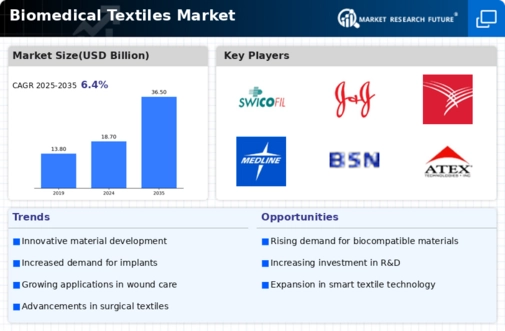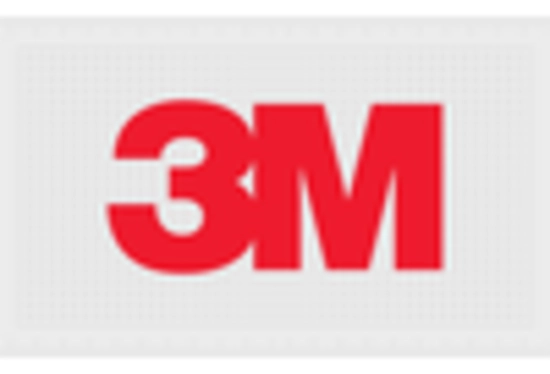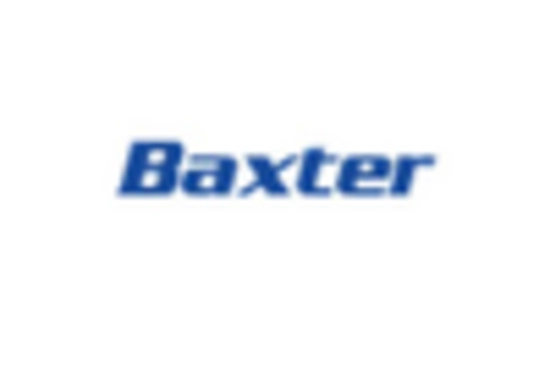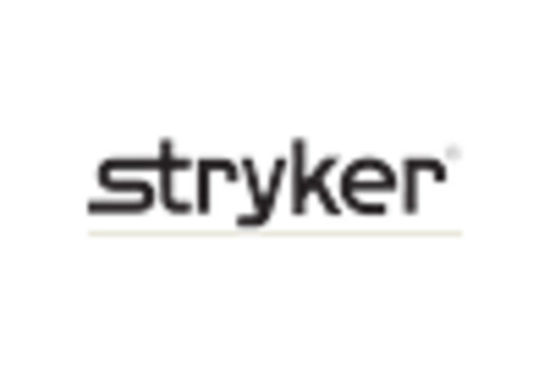Emergence of Regenerative Medicine
The Biomedical Textiles Market is witnessing a transformative impact from the emergence of regenerative medicine. This field focuses on repairing or replacing damaged tissues and organs, which necessitates the development of specialized textiles that can support cellular growth and tissue regeneration. The integration of biomedical textiles in regenerative applications, such as scaffolds for tissue engineering, is gaining traction. As research progresses, the market is expected to evolve, with projections indicating a potential increase in demand for regenerative textile products. This evolution reflects the broader trend of personalized medicine and the need for innovative solutions in healthcare.
Rising Demand for Healthcare Services
The Biomedical Textiles Market is significantly influenced by the rising demand for healthcare services across various regions. As populations age and chronic diseases become more prevalent, the need for effective medical textiles is escalating. This trend is reflected in the increasing investments in healthcare infrastructure, which is expected to reach trillions in the coming years. Consequently, the demand for biomedical textiles, including surgical gowns, drapes, and implantable devices, is anticipated to rise. The market is likely to witness a robust growth trajectory, fueled by the necessity for high-quality, reliable medical textiles that meet stringent regulatory standards.
Growing Awareness of Infection Control
The Biomedical Textiles Market is benefiting from a heightened awareness of infection control measures in healthcare settings. The increasing incidence of hospital-acquired infections has prompted healthcare providers to adopt advanced textile solutions that offer antimicrobial properties. This shift is leading to a growing preference for textiles that can effectively reduce the risk of infections during surgical procedures and patient care. The market for antimicrobial biomedical textiles is projected to expand, with estimates suggesting a growth rate of around 7% annually. This trend underscores the critical role of biomedical textiles in enhancing patient safety and improving healthcare outcomes.
Sustainability Initiatives in Textile Production
The Biomedical Textiles Market is increasingly influenced by sustainability initiatives aimed at reducing the environmental impact of textile production. Manufacturers are adopting eco-friendly materials and processes, which not only appeal to environmentally conscious consumers but also comply with regulatory requirements. The shift towards sustainable practices is expected to drive innovation in the development of biodegradable and recyclable biomedical textiles. As a result, the market is likely to see a rise in the adoption of sustainable textiles, with estimates suggesting that eco-friendly products could account for a significant share of the market by 2030. This trend highlights the importance of aligning healthcare solutions with environmental stewardship.
Technological Advancements in Biomedical Textiles
The Biomedical Textiles Market is experiencing a surge in technological advancements that enhance the functionality and performance of textile products. Innovations such as 3D printing and nanotechnology are being integrated into textile manufacturing processes, allowing for the creation of customized and complex structures. These advancements not only improve the mechanical properties of textiles but also enable the incorporation of bioactive agents that promote healing. As a result, the market is projected to grow at a compound annual growth rate of approximately 8% over the next five years, driven by the increasing demand for advanced wound care solutions and surgical implants.

















Leave a Comment